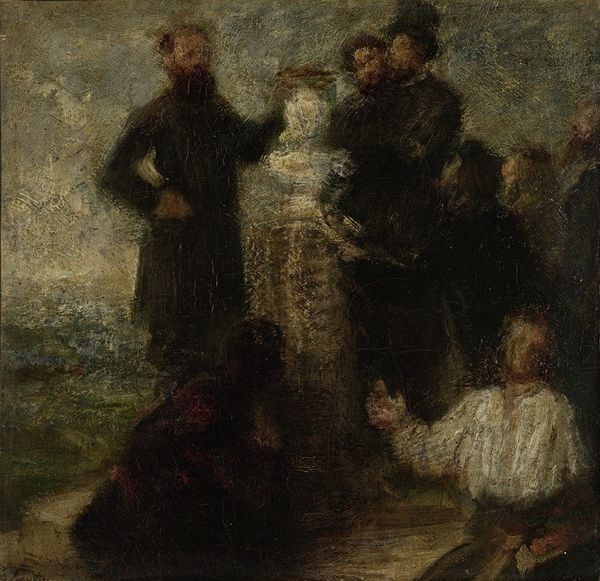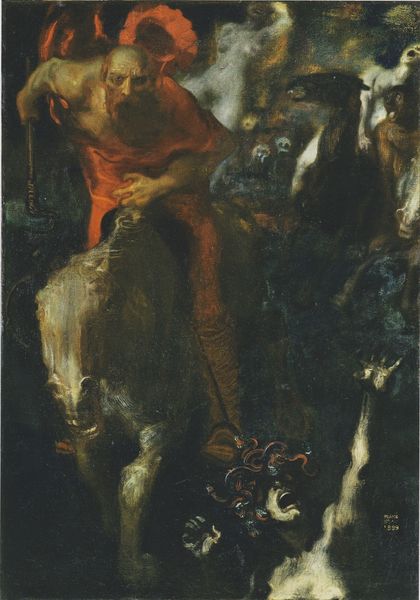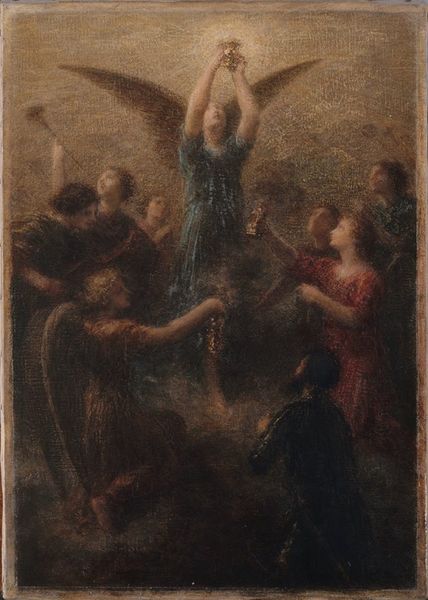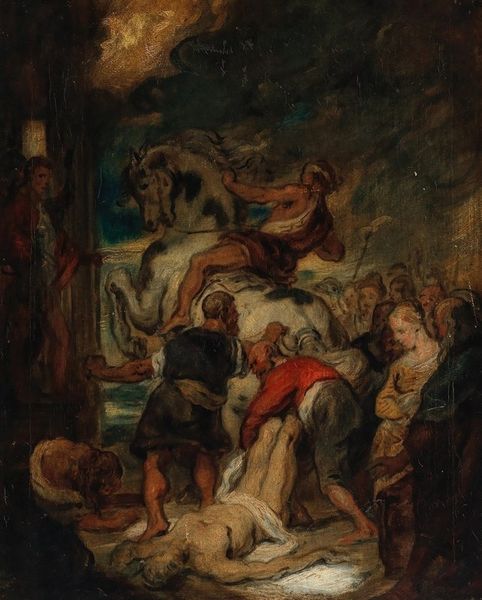
Copyright: Public Domain: Artvee
Curator: This is Henri Fantin-Latour's "Hommage À Eugène Delacroix," painted in 1864. The work in oil presents a fascinating glimpse into artistic appreciation and the community surrounding Delacroix after his death. Editor: It's remarkably dark, almost somber. A feeling of profound respect emanates from the brushstrokes, but it’s also… blurry? Not the crisp detail one might expect in a painting of homage. Curator: Yes, and that very handling of the paint interests me. See how Fantin-Latour builds form with layers of scumbled pigment, particularly in the draped clothing and the backdrop. He’s clearly working to render the figures and symbolic elements through the materiality of the paint itself. Editor: Right. But that blurriness seems intentional. The focus isn't just on celebrating Delacroix. I read this as Fantin-Latour acknowledging the very male, very elite world that centered on artistic genius at the time. Notice how all the figures present appear to be white males of some note. Curator: True, you see this acknowledgement specifically with those dressed in black in the front? They blend together quite harmoniously. The conscious design emphasizes the shared positionality of its patrons. Editor: Exactly! The symbolic addition of the allegorical figure of Fame crowning Delacroix's bust brings up so many layers. Who gets to write history, who gets remembered, and on whose terms. There is that white, male dominated art world literally blowing its own horn. Curator: Furthermore, considering the materiality here, you can notice that the act of painting such works can act to build that "art world". What resources must be involved? Editor: So much power in dictating taste. The oil paints themselves were expensive commodities back then and even now. There are clear lines that tie material and artistic labor. Curator: Delacroix, an artistic legend, becomes not just a figure of Romantic genius but also an opportunity for artists such as Fantin-Latour and his circle to define their place in an artistic, but socially shaped hierarchy. Editor: Ultimately, despite what looks at first blush as purely an act of appreciation, looking closer we uncover its historical and sociopolitical complexity as this work questions established canons in ways we can even start relating to modern gender and race theory. Curator: Indeed! Thinking of Fantin-Latour’s choices concerning pigment and composition lets us question its function as an important act that defines the social standing and conditions present to many members within that very artistic circle, solidifying the myth that constitutes this era's art.
Comments
No comments
Be the first to comment and join the conversation on the ultimate creative platform.













